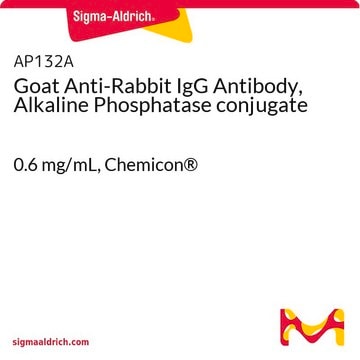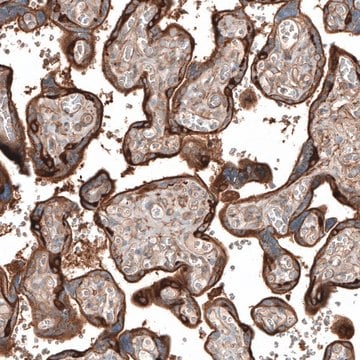SAB4600031
Anti-Chicken IgY (H+L), highly cross-adsorbed, CF™ 488A antibody produced in donkey
~2 mg/mL, affinity isolated antibody
Synonym(e):
Chicken IgY Antibody
About This Item
Empfohlene Produkte
Biologische Quelle
donkey
Konjugat
CF™ 488A conjugate
Antikörperform
affinity isolated antibody
Antikörper-Produkttyp
secondary antibodies
Klon
polyclonal
Form
buffered aqueous solution
Speziesreaktivität
chicken
Konzentration
~2 mg/mL
Methode(n)
flow cytometry: 1-10 μg/mL
immunocytochemistry: suitable
immunohistochemistry: suitable
indirect immunofluorescence: 1-10 μg/mL
Fluoreszenz
λex 490 nm; λem 515 nm
Versandbedingung
dry ice
Lagertemp.
−20°C
Posttranslationale Modifikation Target
unmodified
Verwandte Kategorien
Allgemeine Beschreibung
CF™ 488A is a green fluorescent dye with excitation argon laser line at 488nm. CF™ 488A is minimally charged, thus, it reduces non-specific binding of antibody conjugates. CF™ 488A is a highly water-soluble and pH-insensitive dye with molecular weight of ~710. This dye has absorption/emission maxima at 490/515nm and it is highly photostable.
Spezifität
Immunogen
Anwendung
Leistungsmerkmale und Vorteile
Physikalische Form
Angaben zur Herstellung
Rechtliche Hinweise
Haftungsausschluss
Not finding the right product?
Try our Produkt-Auswahlhilfe.
Lagerklassenschlüssel
10 - Combustible liquids
WGK
WGK 2
Analysenzertifikate (COA)
Suchen Sie nach Analysenzertifikate (COA), indem Sie die Lot-/Chargennummer des Produkts eingeben. Lot- und Chargennummern sind auf dem Produktetikett hinter den Wörtern ‘Lot’ oder ‘Batch’ (Lot oder Charge) zu finden.
Besitzen Sie dieses Produkt bereits?
In der Dokumentenbibliothek finden Sie die Dokumentation zu den Produkten, die Sie kürzlich erworben haben.
Kunden haben sich ebenfalls angesehen
Unser Team von Wissenschaftlern verfügt über Erfahrung in allen Forschungsbereichen einschließlich Life Science, Materialwissenschaften, chemischer Synthese, Chromatographie, Analytik und vielen mehr..
Setzen Sie sich mit dem technischen Dienst in Verbindung.











